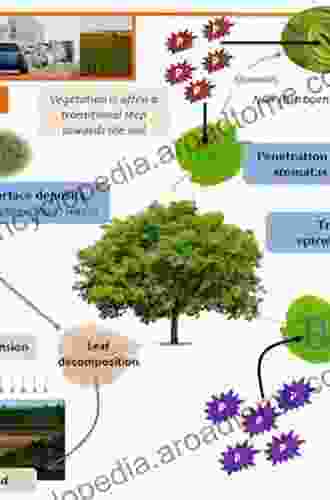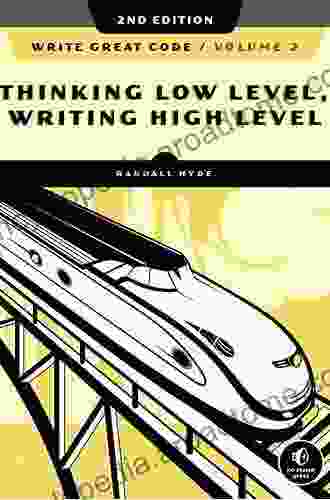Plant Responses To Air Pollution

Air pollution, the presence of harmful substances in the atmosphere, is a growing concern worldwide. As the concentration of pollutants in the air continues to rise, it becomes increasingly important to understand how plants respond to these environmental stresses.
Physiological Adaptations
Plants have evolved a range of physiological adaptations to cope with air pollution. These adaptations include:
5 out of 5
- Leaf Morphology: Plants can modify their leaf shape, size, and thickness to reduce the surface area exposed to pollutants. Smaller, thicker leaves with a waxy cuticle help to minimize pollutant absorption.
- Stomatal Regulation: Stomata are small pores on the leaf surface that allow for gas exchange. Plants can control the opening and closing of stomata to reduce pollutant uptake. Some plants have specialized structures, such as trichomes, that physically block stomata.
- Enhanced Antioxidant Production: Air pollutants can generate reactive oxygen species (ROS),which can damage plant cells. Plants respond by producing antioxidants, such as glutathione and ascorbate, to neutralize ROS and protect their cellular components.
- Increased Pigment Production: Pigments, such as chlorophyll and carotenoids, help plants absorb light for photosynthesis. However, some pigments can also act as antioxidants and protect plants from UV radiation. Air pollution can stimulate increased pigment production as a defense mechanism.
Pollutant-Induced Stress
While plants have adaptive mechanisms to tolerate air pollution, exposure to high levels of pollutants can induce stress. Pollutant-induced stress can manifest in a variety of ways, including:
- Reduced Growth and Development: Air pollution can inhibit cell division and interfere with plant growth and development. Reduced leaf area, stunted stems, and delayed flowering are common symptoms of pollutant stress.
- Photosynthetic Inhibition: Air pollutants can damage photosynthetic pigments and disrupt the electron transport chain. This leads to reduced photosynthetic efficiency and impaired plant growth.
- Oxidative Damage: Exposure to air pollutants can generate ROS, which can damage cellular components, including proteins, lipids, and DNA. This can lead to cell death and reduced plant viability.
- Nutrient Imbalances: Air pollution can affect nutrient uptake and transport in plants. This can result in nutrient deficiencies or imbalances, which can impact overall plant health.
Plant Responses as Bioindicators
The responses of plants to air pollution can be used as bioindicators of environmental quality. By monitoring plant health and observing changes in physiological parameters, scientists can assess the level and impact of air pollution in a given area.
Bioindicators can be used to identify areas of high air pollution, monitor the effectiveness of air pollution control measures, and predict potential risks to plant health and biodiversity.
Plant responses to air pollution are complex and multifaceted. Plants have evolved physiological adaptations to cope with pollutants, but exposure to high levels of pollution can induce stress and inhibit growth and development. Understanding these responses is essential for assessing the impact of air pollution on plant health and ecosystems.
By monitoring plant responses and using them as bioindicators, we can gain valuable insights into the quality of our air and work towards reducing air pollution to protect plant and human health.
5 out of 5
Do you want to contribute by writing guest posts on this blog?
Please contact us and send us a resume of previous articles that you have written.
 Book
Book Novel
Novel Page
Page Chapter
Chapter Text
Text Story
Story Genre
Genre Reader
Reader Library
Library Paperback
Paperback E-book
E-book Magazine
Magazine Newspaper
Newspaper Paragraph
Paragraph Sentence
Sentence Bookmark
Bookmark Shelf
Shelf Glossary
Glossary Bibliography
Bibliography Foreword
Foreword Preface
Preface Synopsis
Synopsis Annotation
Annotation Footnote
Footnote Manuscript
Manuscript Scroll
Scroll Codex
Codex Tome
Tome Bestseller
Bestseller Classics
Classics Library card
Library card Narrative
Narrative Biography
Biography Autobiography
Autobiography Memoir
Memoir Reference
Reference Encyclopedia
Encyclopedia Philippa A Garety
Philippa A Garety Jon Harris
Jon Harris Susan Wingate
Susan Wingate Steven Johnson
Steven Johnson H G Wells
H G Wells Louis D Hayes
Louis D Hayes Sally A Rood
Sally A Rood Adrian Levy
Adrian Levy Steve Souders
Steve Souders Paul W Flint
Paul W Flint Richard Wiles
Richard Wiles Michael Adams
Michael Adams 002 Edition Kindle Edition
002 Edition Kindle Edition W F Duncan
W F Duncan Elizabeth Pantley
Elizabeth Pantley Valentina Emilia Balas
Valentina Emilia Balas Craig L Foster
Craig L Foster Ferdinando Santacroce
Ferdinando Santacroce Clare Conville
Clare Conville John Robison
John Robison
Light bulbAdvertise smarter! Our strategic ad space ensures maximum exposure. Reserve your spot today!

 Miguel NelsonThe 75 Day Challenge: Unlock Your Inner Strength, Build an Unbreakable Mind,...
Miguel NelsonThe 75 Day Challenge: Unlock Your Inner Strength, Build an Unbreakable Mind,...
 Raymond ChandlerSuicide and the Soul: Exploring the Unconscious Psyche and the Pressure to...
Raymond ChandlerSuicide and the Soul: Exploring the Unconscious Psyche and the Pressure to...
 Chinua AchebeCentury 21 Jr Computer Applications with Keyboarding: The Essential Guide to...
Chinua AchebeCentury 21 Jr Computer Applications with Keyboarding: The Essential Guide to... Quincy WardFollow ·17.5k
Quincy WardFollow ·17.5k Juan RulfoFollow ·11.8k
Juan RulfoFollow ·11.8k Roland HayesFollow ·8.1k
Roland HayesFollow ·8.1k Aubrey BlairFollow ·11.3k
Aubrey BlairFollow ·11.3k Robert HeinleinFollow ·2.9k
Robert HeinleinFollow ·2.9k Roy BellFollow ·12.3k
Roy BellFollow ·12.3k Jessie CoxFollow ·4.1k
Jessie CoxFollow ·4.1k Jared NelsonFollow ·6.4k
Jared NelsonFollow ·6.4k

 Desmond Foster
Desmond FosterBreak Free from the Obesity Pattern: A Revolutionary...
Obesity is a global pandemic affecting...

 Jared Nelson
Jared NelsonRobot World Cup XXIII: The Ultimate Guide to Advanced...
The Robot World Cup XXIII: Lecture Notes in...

 Charlie Scott
Charlie ScottFirst International Conference TMM CH 2024 Athens...
Prepare for...

 Finn Cox
Finn CoxRe-Capturing the Conversation about Hearing Loss and...
Challenging...

 Camden Mitchell
Camden MitchellJourney into the Realm of Digital Systems: An Immersive...
In the ever-evolving technological...

 Javier Bell
Javier BellUnveiling the Toxins Behind Multiple Sclerosis: A...
Multiple sclerosis...
5 out of 5





